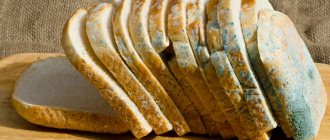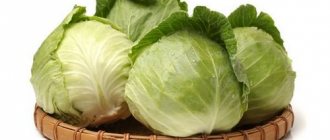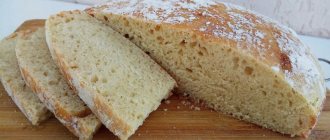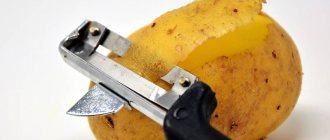The shelf life of baked goods is short. So, how to store bread so that it does not go stale or moldy?
Rye is stored for 36 hours, wheat - for a day. Small items up to 200 grams – 16 hours. To preserve the nutritional and taste properties of baked goods, it is recommended to maintain an air humidity of 75% and a temperature of 18-25 C.
Bread that goes on sale is accompanied by documents indicating the date and hour of baking. During storage, processes occur in flour products that deteriorate the quality and taste. The product loses moisture and dries out.
Where to store bread? Traditional way - bread box
It is convenient to keep baked goods in a bread box. It is desirable that it consist of two sections. Bread containers are made from different materials: ceramics, plastic, metal, wood.
The experts' opinion is clear. The best material for making bread bins is considered to be wood of the highest quality.
To increase the freshness of the loaves, place it in a dry, bright place, further from the sink.
Rules for caring for a wooden container:
- Once a week, wipe surfaces with a weak solution of vinegar;
- Wash the product in warm water 2 times a week and dry thoroughly;
- Ventilate the kitchen regularly.
Following these tips will help avoid mold and keep the product fresh and appetizing.
Why does bread mold in the bread bin?
Causes of mold:
- Poor quality flour: violation of storage standards, contamination with harmful bacteria. In a warm and humid kitchen, mold grows instantly.
- Dirty bread bin: not washed after spoiled product. Not completely dried.
- Loaves of a certain manufacturer: buy at another bakery.
- The sanitary standards for baking and the contents of the composition were violated.
Frequent airing of the kitchen and lemon peels placed in a container overnight will help keep the bread fresh.
What material should the bread box be made of?
A variety of materials are used to make bread bins. Let's look at the most commonly used ones.
- Stainless steel models look very impressive. Especially if the kitchen is decorated in high-tech style. These products are lightweight, comfortable and durable. Stainless steel does not absorb odors, and dishes made from it will last a long time.
- The cost of utensils made from food-grade plastic is low. In addition, plastic is lightweight and can be cleaned fairly quickly.
- Wooden bread bins require complex maintenance. Although they are considered the safest in environmental terms.
- You can find birch bark options in kitchens. Despite its uniqueness and low weight, bread made from birch bark quickly dries out. Therefore, it is necessary to take additional measures to prevent the bread from going stale prematurely.
- Bamboo is an excellent material for storing bread. It does not rot, and bread in a bamboo bowl remains fresh for a long time.
- At one time, glass options were very popular. But, unfortunately, glass products do not allow air to pass through. This became an obstacle to the widespread use of glass bread bins.
Experts consider wood to be the most suitable material for bread bins.
Convenient storage in fabric and polyethylene
Bread and bakery products are stored in different ways. Some housewives prefer fabric bags, others prefer plastic bags.
In addition to ordinary bags, pieces of flax or canvas are used. Wrap it up and put it in the closet. This keeps the product fresh and fluffy for 3-4 days. Then it becomes stale, but does not lose its taste.
It is recommended to wash the fabric or storage bag 2-3 times a month. Use unscented soap and do not use powders with fragrances. Additives in detergents affect the quality of the product.
Plastic bags keep bread loaves fresh for 5 days. It is important that the loaf is clean and dry. A polyethylene bag retains moisture and prevents the loaf from becoming stale and dry out.
But at the same time, the material increases the accumulation of condensation. High humidity creates an environment inside the bag that is favorable for the growth of bacteria.
That's why the bag needs holes. You can pierce the holes with a fork or knife.
The factory packaging initially contains round holes. Air enters and prevents the appearance of wet spots and mold.
Secrets of long-term storage
– Bread will be tasty and healthy for a long time if you follow these tips:
– Place peeled potatoes or apple slices in a container. These products absorb excess moisture and prevent the loaves from hardening.
– A hot, freshly baked loaf should be cooled. Leave for 3 hours, pack.
– Store the rolls in closed containers and pans in additional packaging.
– The old method recommends: first divide the loaf into two parts. Cut the required number of pieces from the center. Remove the rest by pressing with the cuts.
– Keep the product in bags containing 3 layers: fabric inside and outside, plastic between them. the product will remain soft for 3-4 days.
– Cut and sew the bags. Soak in saline solution. Dry without rinsing with water.
To choose the right storage method, try them all and settle on the one that suits you.
Is it possible to store baked goods in the refrigerator: salvation or mistake?
According to housewives, flour products remain fresh in the refrigerator for 6-7 days.
To do this, it is advisable to follow the rules:
1. Remember that flour absorbs the odors of other foods. Therefore, it is recommended to put baked goods in the refrigerator in a container or bag.
2. It is forbidden to store bread that has not cooled down in the refrigerator compartment. Moisture collects on the walls of the package and the bun spoils.
3. Bread products that are beginning to mold should not be placed in the refrigerator. A lower temperature will not prevent the process. In addition, the pathogenic fungus will spread to the rest of the food.
Low temperature is considered a negative factor of this method. Chilled bread seems tasteless and loses its smell. The bun has to be reheated before eating. Many people don’t like the fact that it dries and hardens because the moisture evaporates faster than at the temperature in the room. And they choose a freezer.
Useful tips
To increase the shelf life of bread, you can use a few more useful tips:
- Do not buy bread in excess; it is better to buy as much as you can eat. When you buy extra bread, there is a huge chance that you will have to throw away half of it.
- You can increase the shelf life of buns by using cut potatoes. To do this, you need to take part of the potato and put it in a paper bag or bread box.
- To prevent mold from growing in the bread box, you need to make a small envelope out of fabric and pour mustard into it. The resulting envelope with mustard powder should be placed in the bread bin.
- After purchasing, you need to remove the bread from the bag and hold it for a little while at room conditions (about half an hour), and then put it away for storage. In this way, you can get rid of excess moisture and prevent the appearance of mold in the crumb or on the crust.
Delicious bread is perfect for any family lunch or dinner. You can try baking your own bread, it's actually not that difficult. But you will be absolutely sure of its natural composition, and in addition, it will last longer than store-bought bread by 2-3 days. Any bread, homemade or store-bought, can be stored using any of the methods described above, and then you will not have to throw away the product because it has spoiled.
How to properly store bread in the freezer
Sometimes it becomes necessary to keep the loaves edible for 2 weeks or more. This is possible using a freezer.
A product frozen according to instructions and properly thawed is no different from a freshly baked product. Retains moisture, remains appetizing and soft.
Cut the bun into portions. Place in paper and plastic bag. Remove the air from the packaging and place in the freezer. Set the temperature to 20 C.
Stored at temperatures up to – 18 C for 3-4 months.
Thaw it indoors before eating. It will take 2 hours. Do not freeze the loaf the second time!
If you follow the storage rules, the bread will remain fresh and tasty.
Drying crackers
Crackers are one of the ways to preserve baked goods. The dried pieces are thrown into soup or borscht. If necessary, reheat by steaming.
Drying crackers at home is easy. An accessible method is oven drying:
- cut the bun into pieces;
- spread on a sheet in one layer;
- place in the oven, heated to 120-130 C;
- leave for 10 minutes;
- turn the pieces over and cook until browned, 8 minutes.
The preparation time for crackers is half an hour. For uniform drying, it is advisable to cut pieces of the same size.
How to bring freshness back to a loaf
If a baked product becomes moldy, it will have to be thrown away. But a dried product can be given a second life.
- The remaining large quantities of chopped pieces are placed in the oven and dried. Bread crumbs can be eaten immediately after preparation or placed in a cloth bag for use in home cooking. Properly dried slices can be stored for more than six months.
- If large shapeless pieces have turned into crackers, they are placed in a dry, clean bag. When there is a lot of leftovers, they are broken up with a blender or turned through a meat grinder, turning them into bread crumbs.
Slightly dried bread can be softened in several ways:
- Spray the loaf with water and place in the microwave at medium power.
- Arrange the chopped slices in a circle on a flat plate, and place a container of water in the middle. Microwave for about 20 seconds.
- Wrap the moistened loaf in foil and place in the oven for a quarter of an hour at 180°.
- Fill a wide saucepan a quarter full with boiling water and put it on the fire. When the water boils again, place a smaller container with bread inside it. Keep the pan over low heat until a characteristic bready smell appears.
- Place the loaf in the slow cooker and wait 2 minutes.
As you can see, with the right approach, you can keep bread fresh not only during its standard shelf life. In the refrigerator it will “live” from the full period indicated by the manufacturer on the packaging to a month. And if dried, it will be stored for more than six months.
What else affects the shelf life of baked goods?
Black and white - together or apart?
Grey, black, white: each species has its own individual microflora. And loaves of different types, if placed together, begin to quickly deteriorate.
It is recommended to keep white and black bread apart or pack it in separate bags.
The reasons for the impossibility of storing different varieties together is that white and dark have different amounts of water in the mass of flour. Black contains 80% water, white - about 60%.
In addition, the rich smell of black is absorbed by white loaves.
If wet and moldy spots appear on the pieces, then they are not suitable for food!
Causes of bread spoilage
Mold can appear on bread in just 2-3 days. It occurs for several reasons:
- The manufacturer could have violated the production technology or used low-quality raw materials for preparation (bad flour, large amounts of water).
- Violation of bread storage conditions. When storing bread in rooms with a humidity of more than 70%, mold appears and spreads very quickly.
- Fungal spores get on bread (during cooking or in the store), which quickly begin to multiply at room temperature.
Bread with mold should never be eaten. In addition to the terrible taste, it can pose a danger to human health and cause severe digestive upset.
It happens that there is no mold on the bread, but it becomes stale. This is due to the fact that free starch passes from one state to another. During the baking process, starch combines with water to create a soft, elastic crumb. After some time, the starch turns into a crystalline state, water evaporates from the crumb, and as a result the bread becomes stale.
As mentioned above, moldy bread cannot be revived and eaten, but stale bread has a chance to be refreshed.
REFERENCE! Increasing the temperature to 50-60 0C triggers the reverse reaction and the bread becomes soft and acquires a fresh aroma.
To do this, you need to put the stale bread in the oven, preheated to 60 0C, and leave for 15-20 minutes.
What does SanPin say about the storage of bakery products?
The Russian Federation has established the following sanitary rules and standards for the storage of bread products:
Bread is stored in suitable rooms: light, clean, ventilated and dry. Isolated from heating devices and cold air. Mold and wet stains are not allowed on the walls.
Products are stored in open or closed containers placed on mobile racks. Shelves, trays, racks are made from materials approved by the Ministry of Health: metal, wood, plastic.
It is prohibited to store goods that differ in composition and smell in warehouses for flour products.
For shelf life, the loaves are packaged.
Shelf life of bread products:
- wheat – 3 days in packaging, 1 day without packaging;
- rye – 5 days;
- Borodinsky - 36 hours;
- wheat-rye – 4 days;
- wheat loaf – 1-3 days.
Since 2021, factory packaging for baked goods contains sorbic acid. A natural preservative protects against mold and increases the time of use.
How to recognize a delay?
To avoid buying spoiled bread, pay attention to the presentation:
- the bun should be smooth and without dents;
- take its original shape after squeezing;
- have a bready smell;
- be free of traces of mold and dark deposits.
The presence of one of the listed signs indicates that the product is expired. You can't buy or eat this.











